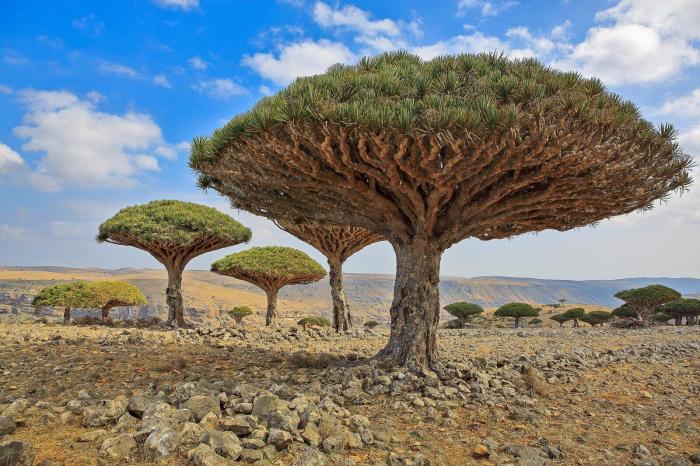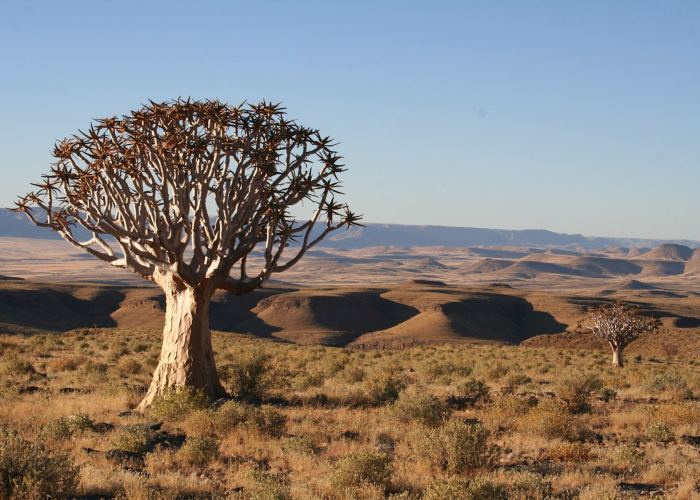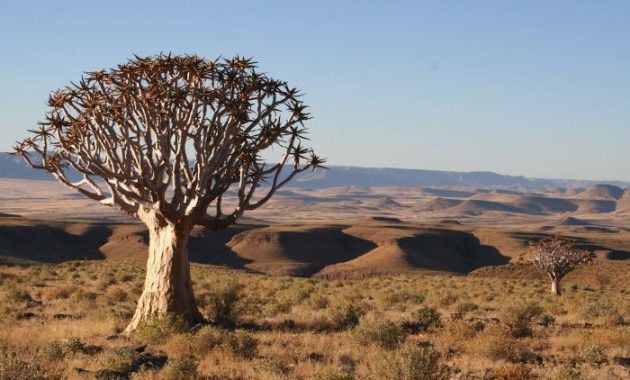Unique Trees by Growth Habits

Unique trees to plant – The natural world showcases a breathtaking diversity in tree forms, extending beyond simple variations in leaf shape and flower color. The very architecture of a tree, its growth habit, can be a defining characteristic, revealing fascinating adaptations to its environment and evolutionary history. These unique growth habits, ranging from unusual branching patterns to specialized root systems, contribute significantly to a tree’s overall distinctiveness and survival.
Weeping and Multi-trunked Growth Forms
Trees exhibiting weeping forms, characterized by pendulous branches that gracefully cascade downwards, often achieve this through genetic predisposition. The specific mechanism involves variations in the production and distribution of growth hormones, resulting in a slower growth rate in the upward direction compared to the downward growth. Examples include the Weeping Willow (Salix babylonica*) whose branches droop dramatically, creating a picturesque silhouette.
Conversely, multi-trunked trees, arising from multiple stems originating from the same root system, demonstrate a different adaptation strategy. This can be a response to damage or stress during early growth, with multiple shoots emerging to increase survival chances. The Japanese Maple (*Acer palmatum*) often exhibits multi-trunked growth, creating a visually striking and structurally complex tree. The distinct branching patterns in these trees are a testament to the interplay between genetics and environmental influences.
Trees with Unusual Root Systems, Unique trees to plant
Certain trees have evolved remarkable root systems adapted to specific environmental challenges. Aerial roots, extending from branches or stems into the air, are characteristic of trees in humid, tropical environments. These roots absorb moisture and nutrients directly from the atmosphere, supplementing the soil-based root system. Mangroves (*Rhizophora*) are prime examples, using aerial roots to breathe in oxygen-poor swampy soils.
Buttress roots, massive, outward-spreading roots that form a distinctive flange-like structure at the base of the trunk, provide structural support for large trees in rainforests. These roots help to anchor the tree in unstable soil, preventing it from toppling over. The giant kapok tree (*Ceiba pentandra*) exemplifies this adaptation, displaying impressive buttress roots that create a visually striking base.
Thinking about unique trees to plant? Beyond the usual maples and oaks, you could add some serious tropical flair! If you’re considering something a little less ordinary, figuring out the best place to plant banana tree is key, since they need lots of sun and warmth. But once you nail the location, you’ll have a super cool conversation starter in your yard, and that’s way more interesting than another boring old oak, right?
These root systems highlight the remarkable ingenuity of trees in coping with diverse environmental conditions.
Adaptations of Trees in Extreme Environments
Trees thriving in extreme environments, such as deserts or high altitudes, exhibit remarkable adaptations for survival. Desert trees often possess adaptations to conserve water, such as reduced leaf size (or even the absence of leaves, as in many cacti), thick bark to reduce water loss, and extensive root systems to access groundwater. The iconic Joshua tree (*Yucca brevifolia*) of the Mojave Desert exemplifies these adaptations.
High-altitude trees, on the other hand, cope with cold temperatures, strong winds, and reduced growing seasons through adaptations such as dwarfing, dense branching, and flexible stems that withstand strong winds. Krummholz, a stunted growth form found at high altitudes, showcases this adaptation, with trees often contorted and low to the ground. These examples showcase the remarkable capacity of trees to adjust their growth strategies to thrive even in the harshest environments.
Unique Trees and Their Ecological Roles

The intricate tapestry of life on Earth depends heavily on the contributions of trees, particularly those species possessing unique characteristics that shape their surrounding ecosystems. These unique trees, often found in specific niches, provide vital services and support a remarkable level of biodiversity. Understanding their ecological roles is crucial for effective conservation efforts.The ecological roles of unique tree species are multifaceted and interconnected.
They influence everything from nutrient cycling and soil stability to providing habitat and food sources for a wide range of organisms. Comparing these roles across different species reveals the significant impact even a single tree can have on the overall health and resilience of an ecosystem.
Keystone Tree Species and Their Ecosystem Contributions
Certain tree species act as keystone species, meaning their presence is disproportionately important to the maintenance of biodiversity within their ecosystems. The African baobab (Adansonia digitata*), for example, provides habitat and sustenance for a vast array of animals, from insects and birds to mammals like bats and monkeys. Its deep root system helps stabilize the soil, preventing erosion in arid regions.
Similarly, the giant sequoia (*Sequoiadendron giganteum*) of California’s Sierra Nevada mountains, with its immense size and longevity, provides habitat for numerous species and plays a crucial role in water cycling. These trees’ ecological contributions extend beyond their immediate surroundings, influencing broader landscape dynamics.
Comparative Ecological Roles of Unique Tree Species
Comparing the ecological roles of the aforementioned baobab and sequoia highlights contrasting strategies for success. The baobab, adapted to harsh conditions, emphasizes water storage and resilience to drought. Its wide trunk acts as a reservoir, supporting life during dry periods. The sequoia, on the other hand, thrives in wetter environments, focusing on immense growth to maximize resource capture and longevity.
This difference in adaptation strategy reflects the diverse ecological niches these trees occupy and the unique roles they play within their respective ecosystems. Further comparison could include the mangrove trees (*Rhizophora spp.*), which create vital coastal habitats by stabilizing shorelines and providing nurseries for numerous marine species. Their unique physiology allows them to thrive in saltwater environments, offering a stark contrast to the terrestrial environments favored by baobabs and sequoias.
Conservation Status and Threats to Unique Tree Species
Many unique tree species face significant threats to their survival. Habitat loss due to deforestation, agriculture, and urbanization is a primary concern. Climate change, with its associated shifts in temperature and precipitation patterns, poses an additional challenge, impacting the distribution and survival of these species. The Wollemi pine (*Wollemia nobilis*), a critically endangered conifer discovered in Australia, is a prime example.
Its restricted distribution and susceptibility to disease make it highly vulnerable to these threats. Conservation efforts for such species often involve habitat protection, ex-situ conservation (e.g., seed banking), and research into their ecological requirements and resilience to environmental changes. Effective conservation requires a multi-faceted approach that considers the unique challenges faced by each species and the interconnectedness of their ecosystems.
FAQ Guide: Unique Trees To Plant
What are the common challenges in propagating unique tree species?
Common challenges include difficulty in seed germination, low seed viability, susceptibility to specific diseases, and the need for specialized propagation techniques like grafting or tissue culture.
How do I identify pests and diseases affecting my unique tree?
Regularly inspect your tree for signs of pests (insects, mites) or diseases (leaf spots, wilting, cankers). Consult local arborists or gardening experts for diagnosis and treatment recommendations.
Where can I find unique tree species for sale?
Specialty nurseries, arboreta, and online plant retailers often carry a wider selection of unique tree species. Local botanical gardens may also offer advice on sourcing.

